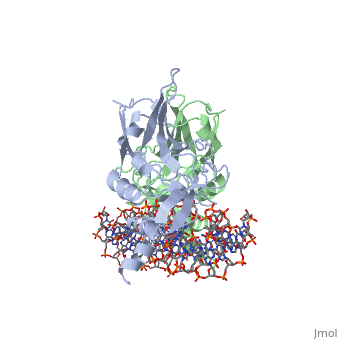DNA and RNA
Deoxyribonucleic acid (DNA) is usually called the blueprint of life. Deoxyribose is a monosaccharide that has a key function in the synthesis of deoxyribonucleic acid. One less oxygen-containing hydroxyl group occurs in deoxyribose sugar. Nucleic acid, deoxyribonucleic acid, is one of the natural components. Deoxyribonucleic acid is a double-stranded molecule. Watson and Crick postulated the double-stranded model of the helix. A deoxyribonucleic acid is a molecular group that carries and transmits genetic information from parents to offspring. All eukaryotic and prokaryotic cells are involved.
DNA as the Genetic Material
DNA, or deoxyribonucleic acid, is a long polymeric nucleic acid molecule discovered in the late 1930s. It is a polymer; a long chain-like molecule made up of several monomers connected in a sequence. It possesses certain characteristics that qualify it as a genetic component. Certain organisms have different types of nucleic acids as their genetic material - DNA or RNA.
Genetics
The significant branch in science which involves the study of genes, gene variations, and the organism's heredity is known as genetics. It is also used to study the involvement of a gene or set of genes in the health of an individual and how it prevents several diseases in a human being. Thus, genetics also creates an understanding of various medical conditions.
DNA Replication
The mechanism by which deoxyribonucleic acid (DNA) is capable of producing an exact copy of its own is defined as DNA replication. The DNA molecules utilize a semiconservative method for replication.
What is Barchyury protein? What is the structural aspects of DNA binding of Barchyury?
In 1927 brachyury mutation was first described in mice by adezhda Alexandrovna Dobrovolskaya-Zavadskaya.Two well-known orthologues of the Homo sapiens T protein are present in mice (Brachyury) and Xenopus laevis (Xbra).

The homologue of T in mice, Brachyury, was the first T-box crystal structure to be determined. Brachyury is a protein in humans which is encoded by TBXT (T-box transcription factor T)gene. Which function as transcription factor within the T-box family of genes and these are found in bilaterian animals.
Structural aspects of DNA binding:
The loops between the β strands make the important contact with DNA.
In the minor groove 11 amino acids make polar contacts with the DNA.
Helix H3 and H4 recognise the DNA in the minor groove.
H3 bridges the DNA backbone which is positioned by Tyr196/Asn209 and makes contacts with the phosphates on the edges and also hydrophobic contacts between guanine ribose and Ile206 in the middle.
H4 points into the minor groove with hydrphobic contacts to base edges/backbone sugars and hydrogen bonds between the Phe211 carbonyl group and N2 of guanine.
Any amino acid can fill this position (i.e., not conserved), however only guanine is recognised.
H3/H4 is not a helix-turn-helix motif. The angle between the helices is 90° (HTH motifs: 120°) and there are 2 amino acids in the loop (HTH motifs: 4), and it interacts in the minor groove (HTH motifs interact in the major groove). The T-domain is very similar to the NF-κB p50, and superimposing these shows the major groove recognition carried out by arginines in both cases. Arginine recognition of the major groove is also present in other T-box proteins such as TBX5.
Step by step
Solved in 3 steps with 1 images









